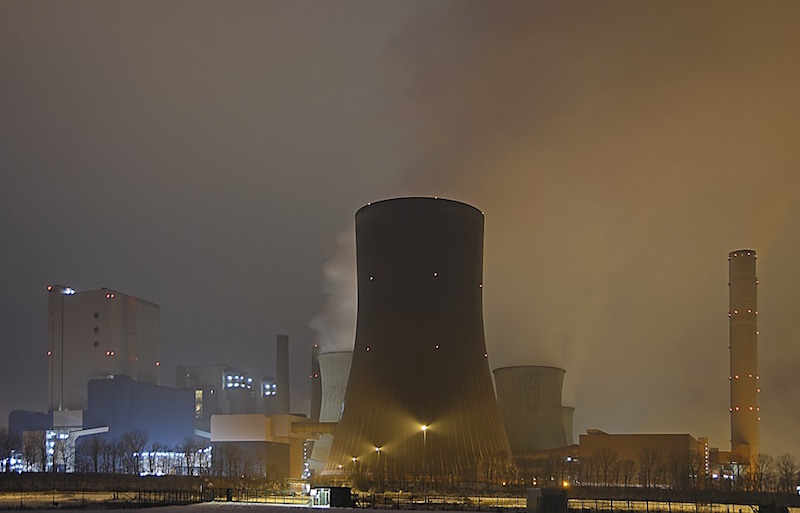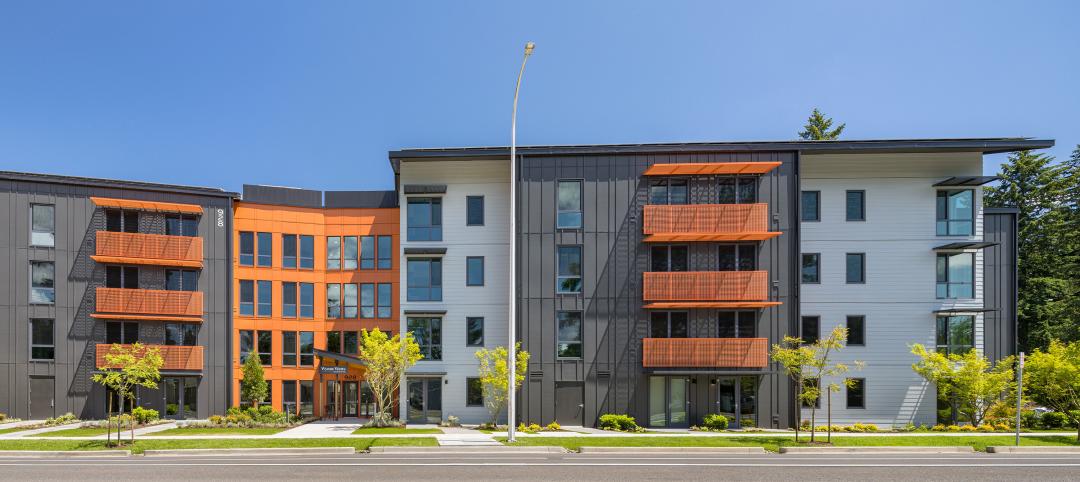In light of the positive news from AIA concerning progress toward its 2030 Commitment targets, it’s nice to see the AEC community showing resolve in this highly charged, post-Paris Climate Accord pullout political environment.
The number of firms involved in AIA’s voluntary pact to slash energy consumption in buildings grew to more than 400 in July. A select number of design practices have already exceeded the initiative’s ambitious target of a portfolio-average predicted energy savings of 70% or greater. To date, more than 330 individual projects designed by 2030 Commitment signatories met or exceeded this target.
If AIA’s estimates are accurate, the environmental and economic impacts of 2030 Commitment projects are significant. The collective potential energy savings from 2016 projects represents 16.7 million metric tons of greenhouse gas emissions, or the equivalent of operating five coal-fired power plants in a given year. The projects also represent more than $1.4 billion in annual energy cost savings.
Impressive, right? But is it enough?
Perhaps not when you consider the types of projects AIA members (and most other AEC firms) work on: primarily new construction, mid- to large-size in scale.
The sleeping giant in the race to slash total energy consumption in the U.S. buildings market is the existing building stock—especially small to mid-sized commercial buildings (50,000 sf or smaller). Retail stores, gas stations, banks, office buildings, schools, auto sales centers—these structures make up 94% of the commercial property stock and represent half of the total square footage. Collectively, they consume 44% of the energy used in all buildings in the U.S., according to DOE.
There is an enormous opportunity to effect change on a wide scale through the deep energy retrofitting of existing commercial buildings. Yet to date, very little progress has been made, according to Jennifer Thorne Amann, Buildings Program Director with Washington, D.C.-based American Council for an Energy-Efficient Economy. In a new white paper, Thorne Amann breaks down the numbers: Of the 332 zero-energy and ultra-low-energy buildings tallied by the New Buildings Institute, only 35 are retrofit projects. Of these, nine were verified as ZEB.
An estimated two billion sf of commercial floor space—2.2% of the total square footage—is retrofit each year, with an average energy-use reduction of 11%. “While this retrofit rate would cover roughly one-third of the existing commercial building stock by 2030, unless the resulting energy savings substantially improve, these retrofits will fall far short of the energy savings goals adopted by states and cities,” says Thorne Amann.
Read her white paper: http://tinyurl.com/ACEEEwp
Related Stories
Government Buildings | Mar 24, 2023
19 federal buildings named GSA Design Awards winners
After a six-year hiatus, the U.S. General Services Administration late last year resumed its esteemed GSA Design Awards program. In all, 19 federal building projects nationwide were honored with 2022 GSA Design Awards, eight with Honor Awards and 11 with Citations.
Geothermal Technology | Mar 22, 2023
Lendlease secures grants for New York’s largest geothermal residential building
Lendlease and joint venture partner Aware Super, one of Australia’s largest superannuation funds, have acquired $4 million in support from the New York State Energy Research and Development Authority to build a geoexchange system at 1 Java Street in Brooklyn. Once completed, the all-electric property will be the largest residential project in New York State to use a geothermal heat exchange system.
Green Renovation | Mar 5, 2023
Dept. of Energy offers $22 million for energy efficiency and building electrification upgrades
The Buildings Upgrade Prize (Buildings UP) sponsored by the U.S. Department of Energy is offering more than $22 million in cash prizes and technical assistance to teams across America. Prize recipients will be selected based on their ideas to accelerate widespread, equitable energy efficiency and building electrification upgrades.
Affordable Housing | Feb 22, 2023
Passive House, sustainability standards meet multifamily development
These multifamily developments are not only Passive House (PHIUS) certified, but affordable for tenants.
Senior Living Design | Feb 15, 2023
Passive House affordable senior housing project opens in Boston
Work on Phase Three C of The Anne M. Lynch Homes at Old Colony, a 55-apartment midrise building in Boston that stands out for its use of Passive House design principles, was recently completed. Designed by The Architectural Team (TAT), the four-story structure was informed throughout by Passive House principles and standards.
Sustainability | Feb 9, 2023
University of Southern California's sustainability guidelines emphasize embodied carbon
A Buro Happold-led team recently completed work on the USC Sustainable Design & Construction Guidelines for the University of Southern California. The document sets out sustainable strategies for the design and construction of new buildings, renovations, and asset renewal projects.
Sustainability | Feb 8, 2023
A wind energy system—without the blades—can be placed on commercial building rooftops
Aeromine Technologies’ bladeless system captures and amplifies a building’s airflow like airfoils on a race car.
Green | Jan 26, 2023
Corporations fall short on climate pledges by failing to embed net-zero actions into operations
Many corporations are failing to implement simple, practical steps needed for them to hit their stated decarbonization goals, according to a survey of more than 300 operations managers across key industrial sectors including construction, energy, and chemicals in the U.S., U.K., and Germany.
Green | Jan 17, 2023
Top 10 U.S. states for green building in 2022
The U.S. Green Building Council (USGBC) released its annual ranking of U.S. states leading the way on green building, with Massachusetts topping the list. The USGBC ranking is based on LEED-certified gross square footage per capita over the past year.
Cladding and Facade Systems | Dec 20, 2022
Acoustic design considerations at the building envelope
Acentech's Ben Markham identifies the primary concerns with acoustic performance at the building envelope and offers proven solutions for mitigating acoustic issues.

















